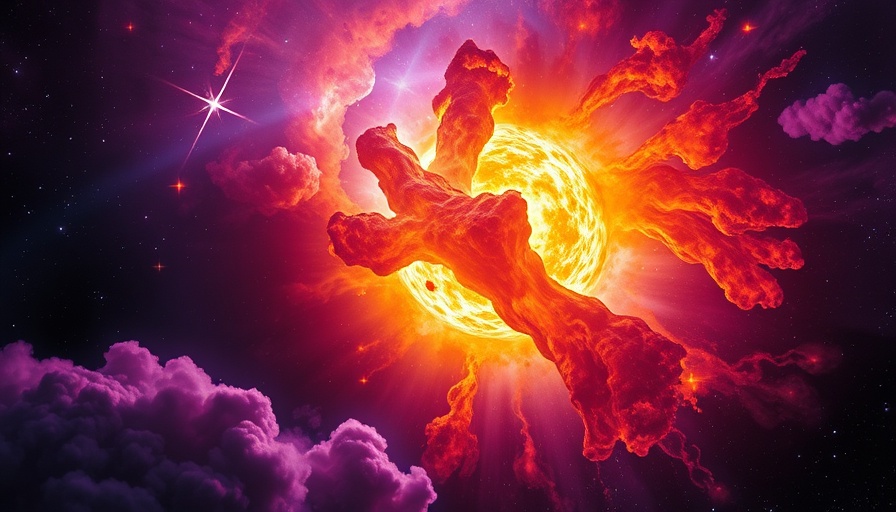
The Green Monster: Unveiling Cosmic Mysteries
The universe continues to capture human curiosity with phenomena that remain largely unexplained. In a recent exploration of Cassiopeia A, a supernova remnant located about 11,000 light-years from Earth, NASA's James Webb Space Telescope has revealed a fascinating new feature dubbed the "Green Monster." This peculiar observation has contributed to a deeper understanding of the processes involved in stellar explosions and their aftermath.
A Peek into Cassiopeia A
Spanning roughly 10 light-years, Cassiopeia A is a vivid reminder of the explosive deaths of stars, showcasing a spectacular display of gases and cosmic debris that formed during the supernova event, which occurred approximately 340 years ago from our perspective. The Green Monster, discovered during recent observations, is part of an intricate network of ejecta filaments laced with oxygen-rich material.
The Powerful Duo: Webb and Chandra
The collaboration of the James Webb Space Telescope and NASA's Chandra X-ray Observatory has proven indispensable to uncovering the secrets of celestial bodies like Cassiopeia A. While Webb excels in capturing intricate details in infrared, Chandra adds another layer of depth by providing X-ray data, allowing astronomers to assemble a clearer picture of these cosmic puzzles.
3D Models: A New Dimension of Understanding
A fascinating advancement stemming from this collaborative effort includes the creation of 3D models of the supernova remnants. These models are based on precise computational algorithms and theoretical frameworks, providing researchers and enthusiasts alike the opportunity to visualize and interact with these stellar remnants. Chandra has already provided similar 3D models, enhancing our understanding of stellar death and the environment surrounding these fascinating cosmic events.
Wider Implications of Stellar Research
The discovery and analysis of objects like the Green Monster hold paramount significance beyond mere aesthetic intrigue. Understanding the life cycles of stars, including their explosive endings, provides crucial insights into cosmic evolution. It informs theories related to star formation, chemical enrichment of galaxies, and the potential for life in the universe.
Charting the Course for Future Discoveries
The exploration of Cassiopeia A using cutting-edge telescopes exemplifies the ongoing quest to decode the mysteries of the universe. As technology advances, the prospects for deeper explorations in the realms of astrophysics and cosmology seem limitless. These discoveries not only feed a scientific appetite for knowledge but also inspire a new generation captivated by the wonders of space.
In an era where space exploration captivates the public’s imagination more than ever, the collaboration among leading astronomical institutions underscores the importance of investment in technology that unveils the cosmos' secrets, serving both scientific inquiry and human curiosity!
 Add Row
Add Row  Add
Add 




Write A Comment